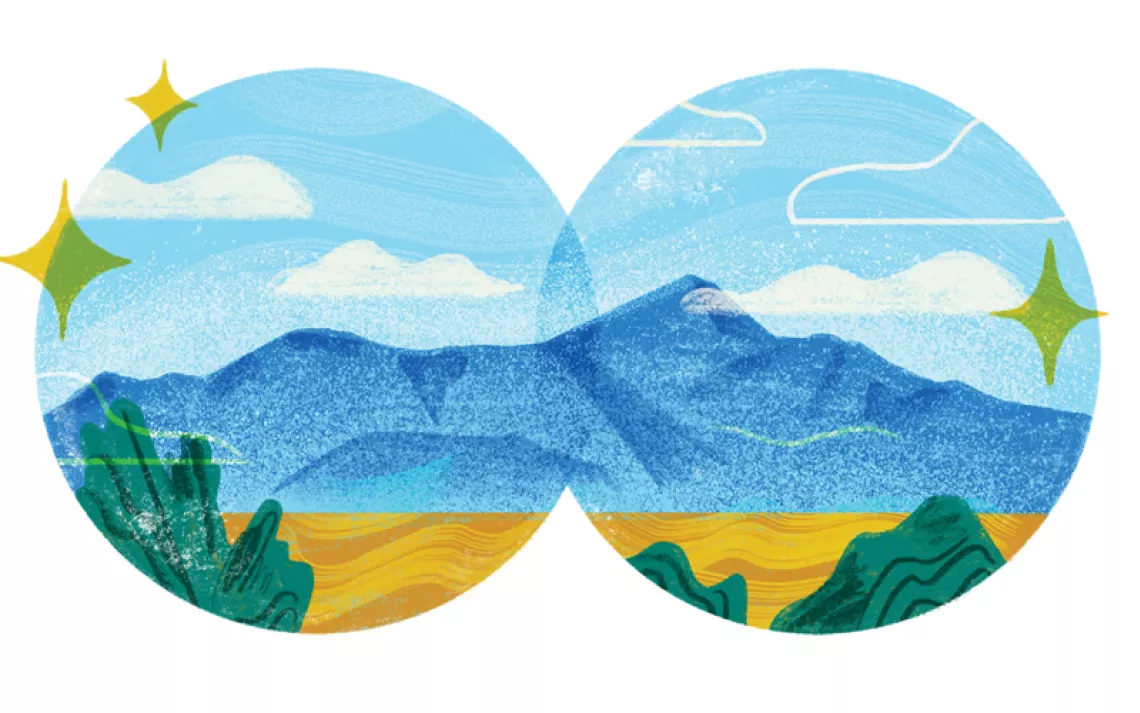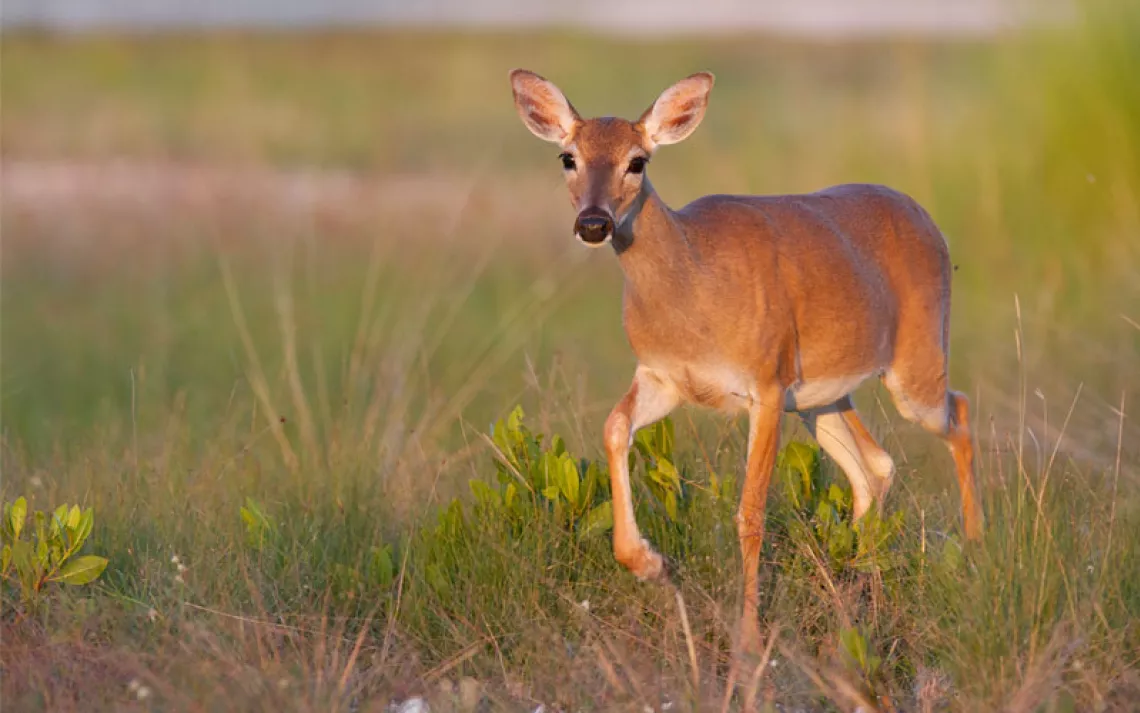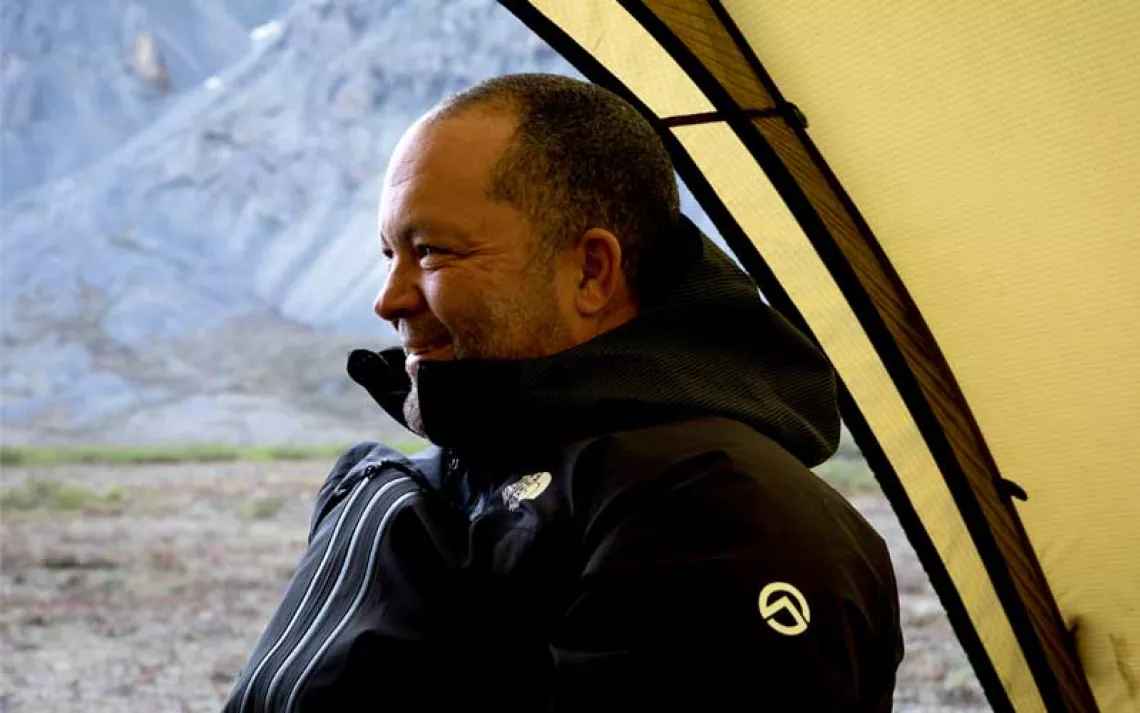Ambassador to the Bear World
Charlie Russell proved humans could coexist with grizzlies—if they want to

Charlie Russell with an orphaned grizzly he reintroduced to the wilds of Kamchatka | Photo by Maureen Enns
Contrary to the expectations of his many detractors in the world of bear researchers, Charlie Russell did not die in the jaws of a Russian brown bear he had naively tried to befriend. Rather, he died on May 7 in his native Alberta, Canada, due to complications from surgery. He was 76.
Had he met an untimely death by bear, Russell would have been less surprised than disappointed. He knew that his chosen field of study—testing in real life his deeply held conviction that humans and grizzlies could coexist—could end badly in a moment. “I want to look at [human/bear trust], but I want to look at it carefully,” he once told me. “If you make a mistake, you die, and that doesn’t do your credibility much good.”
Russell started to question the prevailing wisdom of the bloodthirsty grizzly while growing up on the family ranch next to Waterton National Park in Alberta. In his book Spirit Bear, he recounts watching a large bear known as Old Ephraim walk through a field of cattle: “The grizzly seemed to make a deliberate attempt to be courteous as he selected his travel route through the resting cattle. To my amazement, virtually all the cows and their calves remained lying down, even when the bear passed by within 10 feet of them.
“For a moment I sat on my horse dumbfounded. I then decided to follow the same route. When at least 12 cows jumped to their feet as we passed through, I laughed out loud.”
Russell came to believe that human/bear strife was not inevitable, that bears would not harm humans that they trusted. It was a thesis difficult to test in North America, given the prevalence of hunting, “aversive conditioning” to scare them away from human settlements, or even just the clapping, hooting, and ringing of bear bells that hikers in bear country traditionally use to advertise their presence. Historical chance led him and his then-partner, artist Maureen Enns, to Kamchatka, a large and very wild peninsula jutting out from northeastern Russia that had a large, healthy population of brown bears. The entire peninsula had been a closed military zone in the Soviet era, limiting the amount of hunting—or any human contact, for that matter—that the bears would have experienced.
In 1996, Russell and Enns wangled permission to build a cabin on Kambalny Lake in the South Kamchatka Nature Park near the southern tip of the peninsula. For the next decade, they spent as much time there as the snows and authorities would allow, studying the resident bears and reintroducing orphaned cubs to the wild. Their cabin was guarded by a simple perimeter fence consisting of a few strands of electric wire. “We carry bear spray all the time,” said Russell, “but we’ve never used it. We’ve discovered an even more effective tool, and that is our voice. We talk to the bears in a calm voice, trying to indicate very sincerely that we aren’t going to hurt them, that we aren’t afraid, and that they shouldn’t be afraid either. The important thing is the management of fear.”
In 1998, I had the good fortune to visit Russell and Enns at Kambalny; I wrote about it here. Their method, which could sound lunatic to those brought up on a diet of bear-scare stories, was remarkably simple and natural. Eschewing bear bells and shouting, they’d make their rounds amid streams brimming with salmon and bushes heavy with berries, speaking politely to any bear they came across until the bear either fled or, more often, went back to its business. At the time, they were reintroducing a trio of cubs rescued from a miserable zoo in the town of Yelizovo. When we walked out, the cubs would often come to join us, meandering along while Russell and Enns pointed out to them likely food sources, like lakeside banks where spawned-out salmon might wash up. They never directly fed the cubs, and their lessons seemed to work, as the bears successfully denned and hibernated over winter, greeting their human friends when they came back the following summer.
The end of the experiment came not through ursine violence but that of humans. When Russell and Enns returned to their cabin in 2003, they found it ransacked by poachers. The cubs they’d befriended were likely killed, and a bear gall bladder was left nailed to the wall of the cabin in grim warning. Russell was devastated, tortured by the thought that his efforts to prove the possibility of human/bear coexistence had ultimately betrayed the bears he had befriended.
Russell and Enns produced a number of books in addition to Spirit Bear, including Grizzly Heart: Living Without Fear Among the Brown Bears of Kamchatka, Grizzly Seasons, and Learning to Be Wild: Raising Orphan Grizzlies. They were the subject of a documentary by Nature, Walking With Giants: The Grizzlies of Siberia, and BBC’s Natural World, Bear Man of Kamchatka.
 The Magazine of The Sierra Club
The Magazine of The Sierra Club



